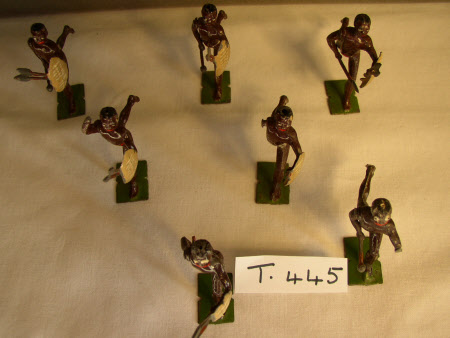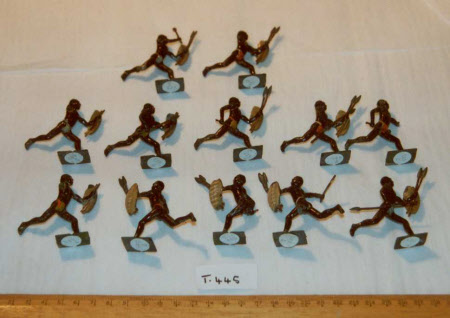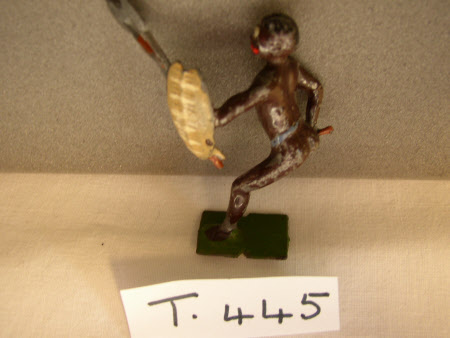Toy figure
W. Britain Jr
Category
Toys
Date
circa 1906
Materials
Metal
Measurements
Each Zulu - 62 mm (height)
Order this imageCollection
Sudbury Hall Museum of Childhood, Derbyshire
NT 664485
Summary
Twelve models representing Zulus all with articulated right arms. Four are running and holding knobkerries in their right hands and spears and oval cow-hide shields in their left hands. One is missing a shield and spear. Four are running and holding spears in their right hands and spears and shields in their left. One has half a spear missing and the other has the spear in the left hand. Four others have their right arm or spears in their left hand missing. Only eight are on display - the rest are in store. Total number of items is 12. Toy soldiers have been popular since at least the 18th century. In 1893 William Britain, a British toy manufacturer, invented a method of hollow casting that made the brand a market leader. Britain produced toys which replicated famous conflicts, including the Anglo-Zulu War (1879) fought between the British Empire and the Zulu Kingdom in what is now South Africa. The war, and in particular the British victory at the Battle of Rorke’s Drift, was depicted in military paintings and published accounts. The representation of Zulu people in these toys is influenced by these popular depictions and perpetuates a stereotype of them as aggressive antagonists.
Marks and inscriptions
Base of the model: 'COPYRIGHT/WM BRITAIN JR/23.5.1906'
Makers and roles
W. Britain Jr , maker



